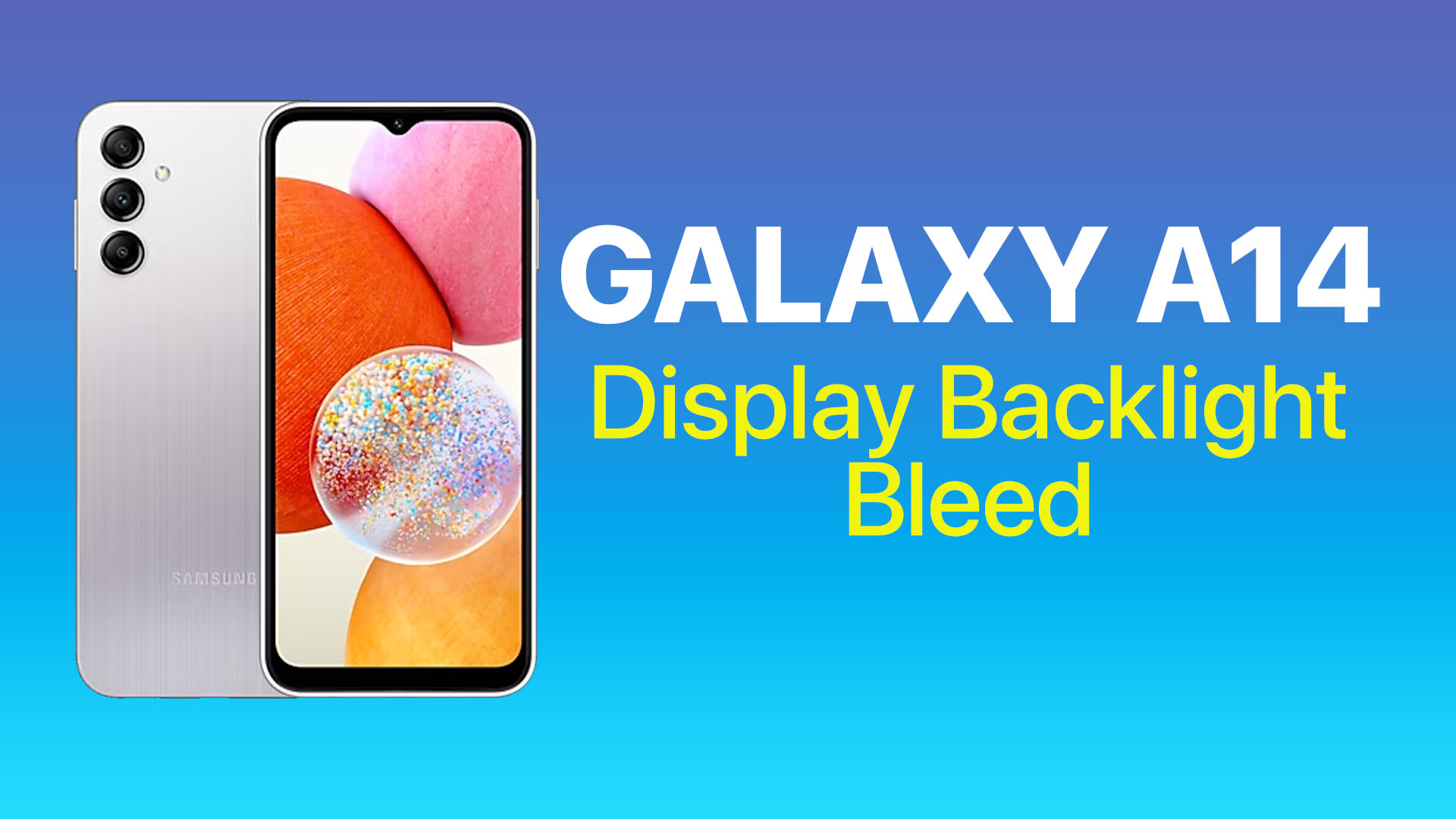Noticing bright spots or cloudy patches on your Galaxy A14’s screen, especially when displaying dark backgrounds? This symptom, known as backlight bleed, can certainly be annoying. Thankfully, determining the underlying cause and applying the right solutions can reduce or eliminate backlight bleed.
Backlight bleed on your A14 generally stems from physical housing issues like warped metal frames putting pressure on the display panel or loose bezels allowing light leakage. Identifying if mechanical factors are distorting the screen or if the display itself is defective is key.
Carefully attempting to flex the frame or reseat the LCD helps determine if it’s a physical construction problem versus screen failure.
Sections
Closely Inspect Display Edges
Begin by thoroughly checking the edges of your A14’s display for any warping or gaps in the metal frame that could allow the backlight to bleed.
Look at all four sides and corners under bright light. See if any sections appear slightly separated, warped, or distorted. Even minor variations in the frame can enable backlight bleed.
Inspecting for physical body defects helps determine if the chassis is contributing to backlight bleed on the Galaxy A14.
Attempt Light Chassis Flexing
If the metal frame appears secure, gently attempt to flex the chassis edges while powered on to check if the backlight bleed is affected.
Hold your A14 securely and carefully flex the short edges, applying slight inward pressure on the left and right sides one at a time with your fingers. See if bleed spots change or diminish from the pressure.
Carefully flexing tests whether a warped body is causing screen backlight bleed that may be corrected by physical adjustments.
Reseat Display Connector Cable
Open your A14 and disconnect, then reconnect the display cable to ensure a good connection, which could reduce backlight bleed.
Power off your phone, open the rear case, disconnect the display cable, clean the connector, then firmly press it back into place and reassemble. This may improve bleed.
Reseating the display cable eliminates a loose connection as the possible cause of backlight bleed symptoms.
Install Screen Protector
Quality screen protectors designed for the Galaxy A14 help keep direct pressure off the underlying display to minimize backlight bleed.
Carefully apply a tempered glass screen protector intended for the A14, following the installation instructions precisely. This relieves strain on the panel.
Installing a well-fitted screen protector relieves physical pressure on the Galaxy A14 display that induces backlight bleeding.
Update Software
Installing the latest software updates can potentially include fixes for display issues that contribute to backlight bleed.
Go to Settings > System updates to check for and install available software updates for your Galaxy A14. Keep firmware current.
Updating to the latest A14 software rules out bugs causing screen problems mistaken for hardware backlight bleed.
Replace Screen
For chronic backlight bleed not resolved by other steps, replacing the display assembly may be required. Use OEM Samsung parts.
Purchase a replacement A14 screen assembly from Samsung or authorized suppliers. Carefully swap out the old display for the new one to eliminate bleed.
When all else fails, installing a new OEM display often resolves persistent backlight bleeding issues affecting visibility.
By methodically troubleshooting and ruling out software factors, you can determine if display replacement is necessary to permanently resolve Galaxy A14 backlight bleed for optimal viewing. Carefully flexing the chassis and reseating connectors may also fix physical contributors.
FAQs
-
Q: What causes backlight bleed on a smartphone display?
A: Backlight bleed occurs when light from the display’s backlight leaks through gaps around the LCD panel edges. It’s often caused by physical housing issues like warped metal frames putting pressure on the panel or loose bezels allowing light leakage. Defective displays can also inherently suffer from backlight bleed.
-
Q: How can I tell if my phone’s display has backlight bleed problems?
A: Check for bright spots or cloudy patches visible on dark backgrounds. Backlight bleed is most noticeable when the screen displays black or very dark images. The bleed will remain static in place if the screen contents change. The spots indicate light leakage from the backlight assembly.
-
Q: What are some solutions for fixing backlight bleed on a smartphone display?
A: Try gently flexing the phone body to relieve physical pressure on the display. Reseating the display cable connector can also help. Using a screen protector provides cushioning from chassis pressure. Adjusting screen uniformity settings may digitally reduce the bleed appearance. Updating software can potentially fix contributors. As a last resort, replacing the display entirely will eliminate bleed if hardware related. Careful inspection is key to determining if it’s a hardware defect.
